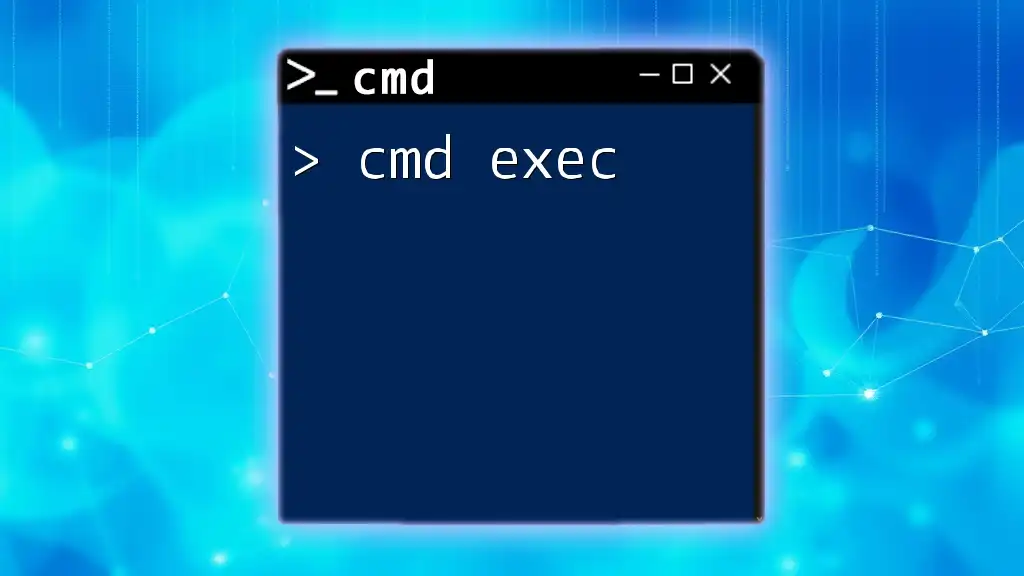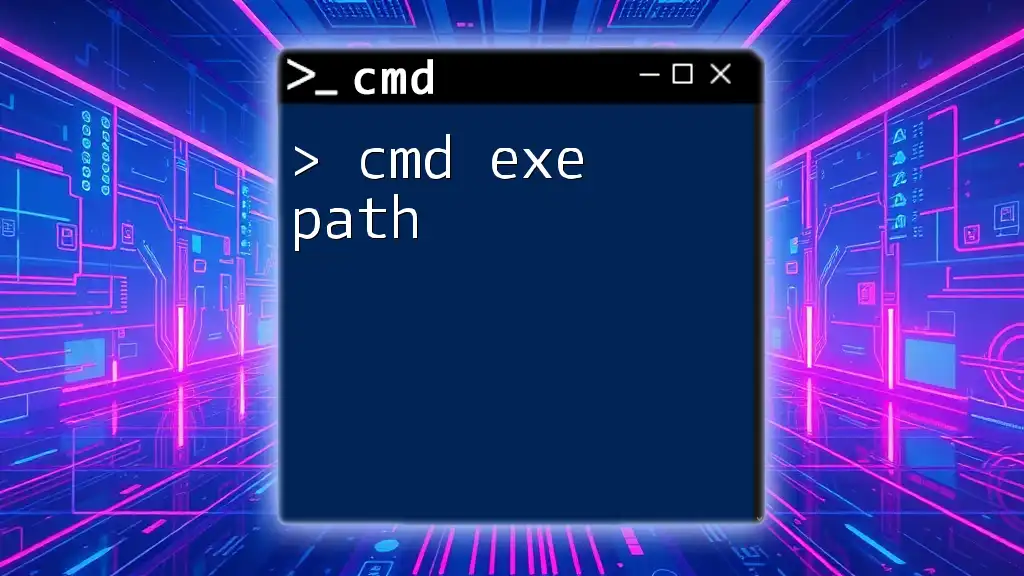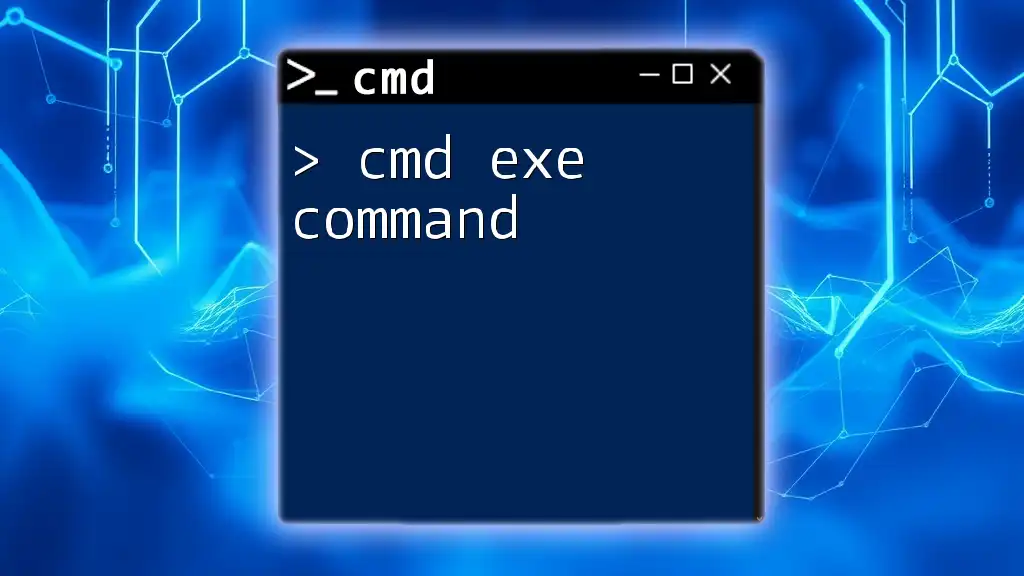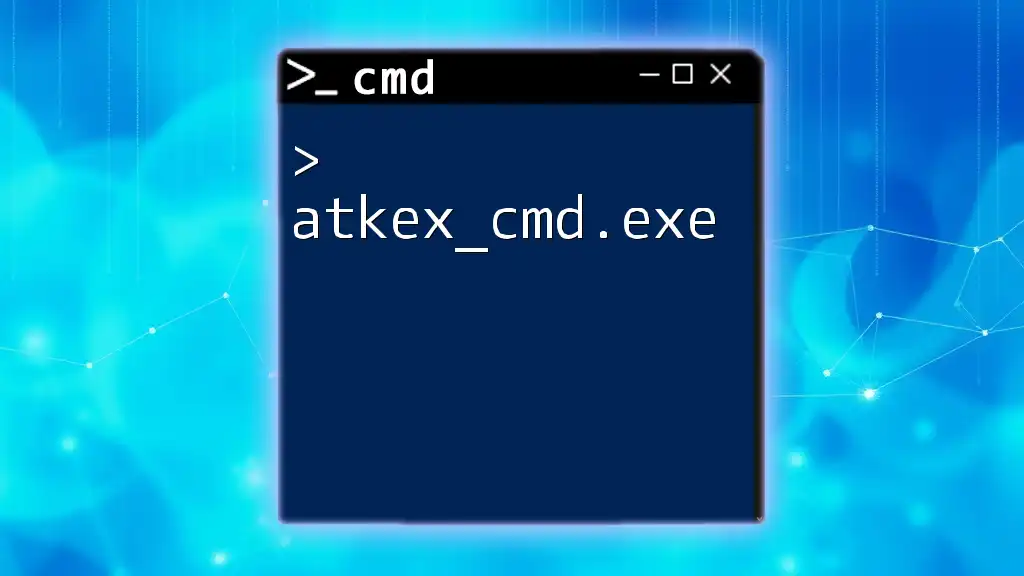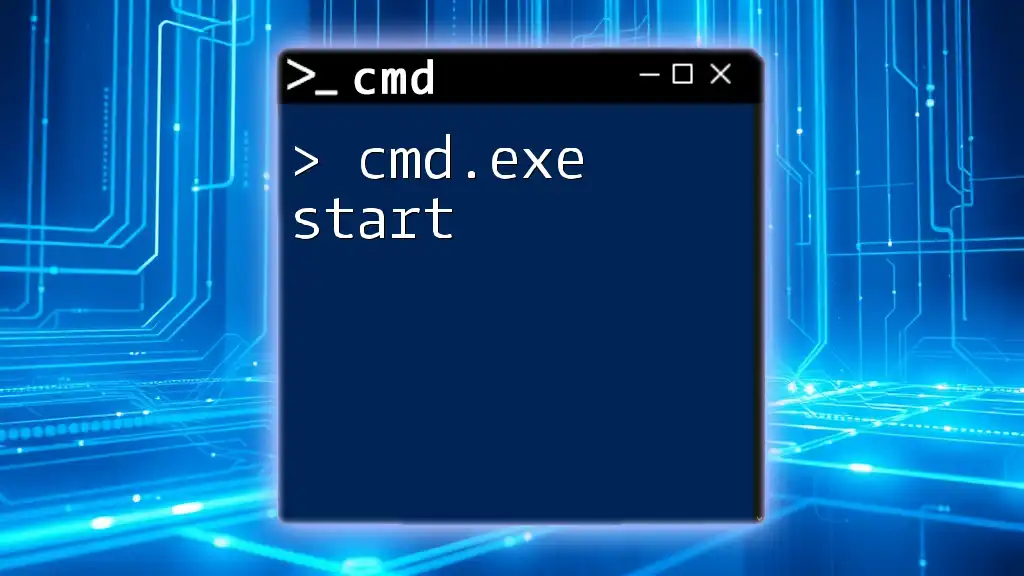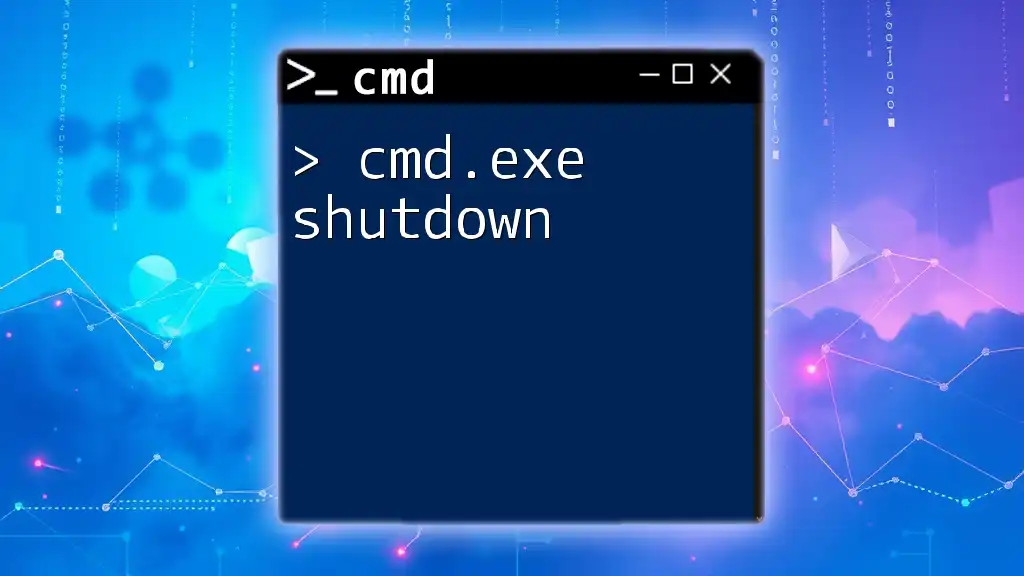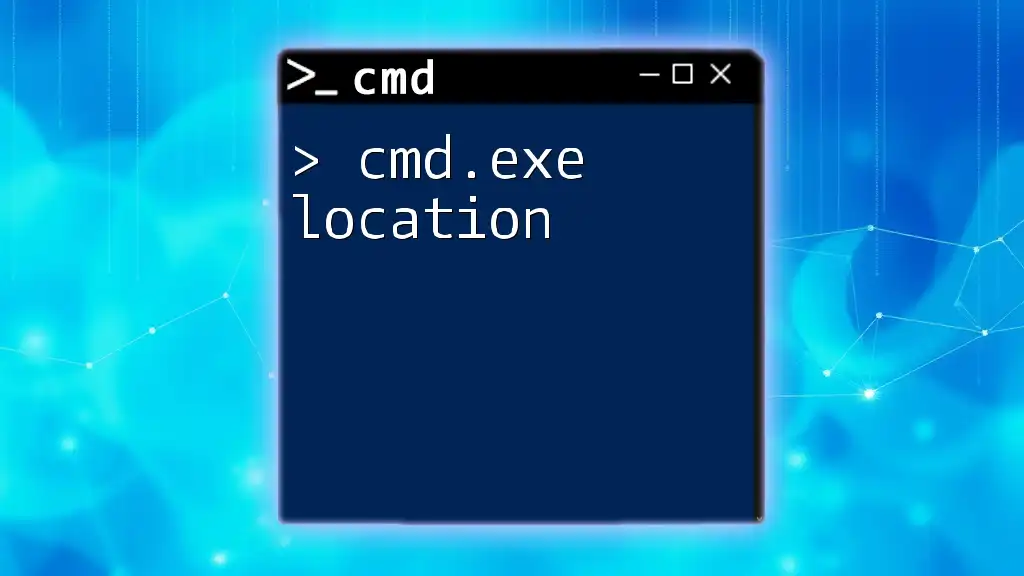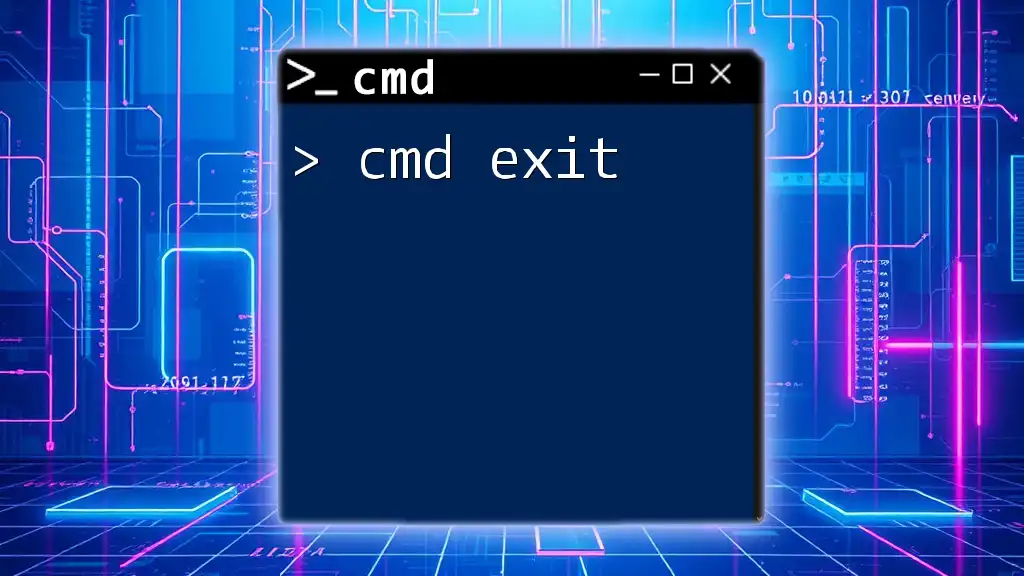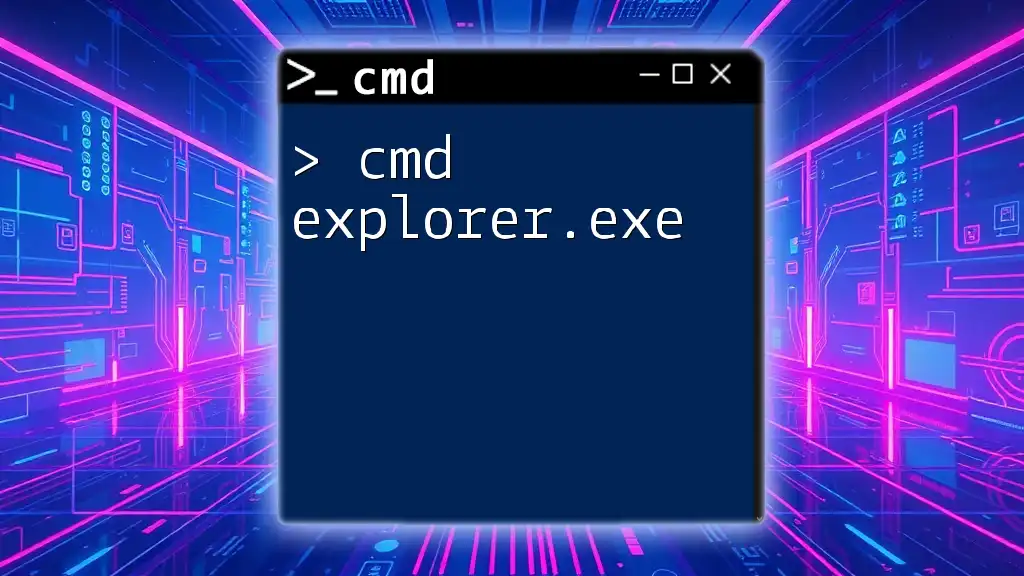"CMD exec" refers to the execution of commands within the Windows Command Prompt to perform various operations on the system.
Here’s a basic example of using CMD to list all files in a directory:
dir
Understanding CMD Exec
The Purpose of CMD Exec
CMD exec is an essential command that allows users to run commands and programs directly within the Windows Command Prompt environment. It provides a sophisticated way to interact with the operating system, making it an invaluable tool for both administrators and casual users. CMD exec serves various purposes, including system management, automation, and troubleshooting.
In comparison to other command-line interfaces, CMD exec is particularly powerful because it allows for integration with batch scripting and environment variable manipulation, enabling users to perform complex operations efficiently.
How CMD Exec Works
When a command is issued within the CMD environment, the command interpreter recognizes the command string, parses it, and executes it. This involves several steps such as resolving the command, locating any required executables, and finally performing the operation. Understanding this process is crucial for those looking to leverage CMD exec effectively.
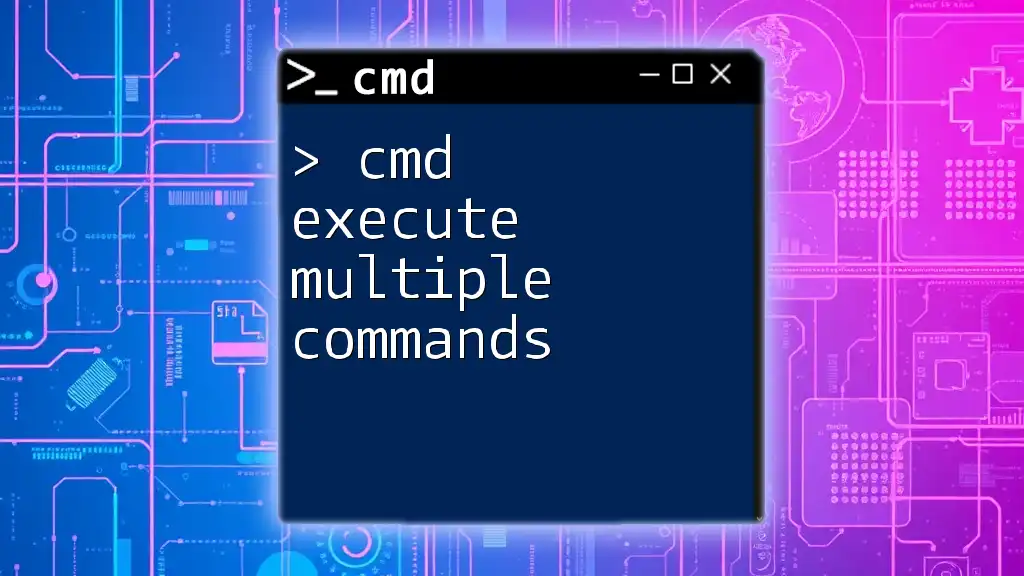
Basic CMD Exec Commands
Running Basic Commands
One of the simplest yet most powerful aspects of CMD exec is the ability to run basic commands.
The ECHO Command is commonly used to display text in the command prompt. For example, executing the following command:
echo Hello World
This command will result in "Hello World" being displayed in the console, making ECHO particularly useful for providing feedback in batch files or command executions.
Another fundamental command is DIR, which lists the contents of the current directory. Simply typing:
dir
will show directories and files along with details such as size and date modified. This command is foundational for navigation through file systems.
Executing Programs
CMD exec also allows you to run programs directly. For instance, if you want to open Notepad, you can use the following command:
start notepad.exe
This command enables rapid access to applications from the Command Prompt, streamlining workflow for users who prefer keyboard shortcuts over GUI navigation.
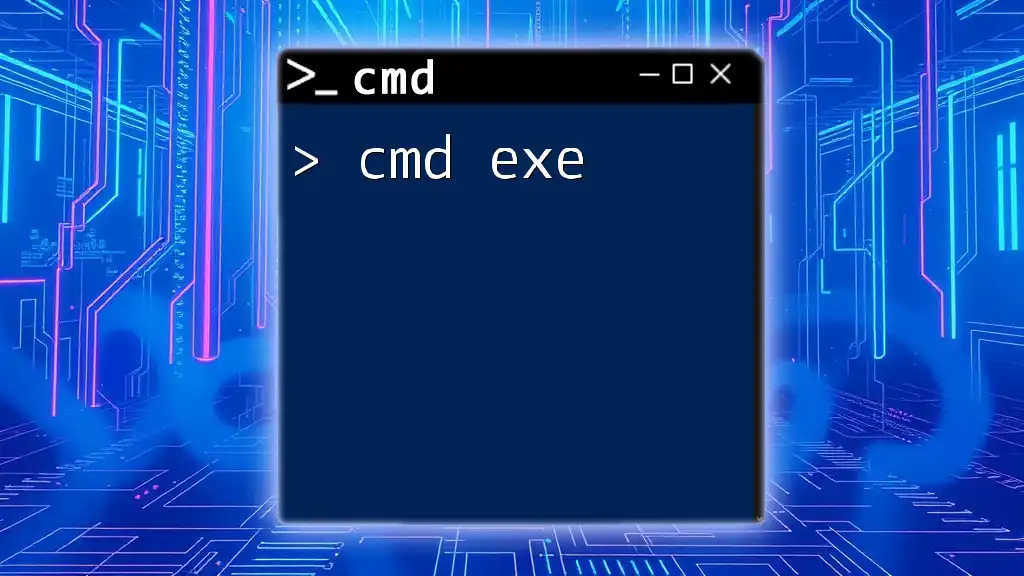
Advanced CMD Exec Techniques
Using CMD Exec with Batch Files
Batch Files are scripts that contain a sequence of commands, allowing users to execute multiple commands at once. This capability simplifies complex operations and automates repetitive tasks.
To create a basic batch file, you will follow these simple steps:
- Open Notepad or any text editor of your choice.
- Write the commands you want to execute, for example:
@echo off
echo Starting My Program...
start notepad.exe
- Save the file with a `.bat` extension, such as `MyScript.bat`.
When you run this batch file, it will execute each command in sequence, starting Notepad after displaying the "Starting My Program..." message.
Environment Variables and CMD Exec
Environment variables serve as placeholders for system values, and they play a critical role in CMD exec by allowing users to create dynamic scripts.
By using the SET Command, you can define your own environment variables. For example:
set MY_VAR=value
You can then reference this variable throughout your CMD session by using `%MY_VAR%`, which will substitute it with its defined value.
Redirecting Output
Output redirection is another powerful feature of CMD exec. You can redirect the output of a command to a file rather than displaying it in the Command Prompt.
For instance, if you want to save the output of the DIR command to a text file, you can use:
dir > output.txt
This command will create or overwrite a file named `output.txt` in the current directory with the directory listing.
If you prefer to append output to an existing file without overwriting its contents, you can use the double greater-than operator:
echo Another line >> output.txt
This method allows for a layer of documentation or log creation as commands execute.
Chaining Commands
CMD exec allows for the chaining of multiple commands, enabling users to perform complex operations in a single line.
The `&` operator allows multiple commands to be run sequentially, regardless of whether the previous command succeeds:
echo Hello & echo World
This command will run both ECHO statements, displaying "Hello" followed immediately by "World."
On the other hand, the `&&` operator allows execution of a second command only if the first command is successful:
command1 && command2
Conversely, the `||` operator executes the second command only if the first command fails:
command1 || command2
These features are particularly useful for conditional executions and creating robust scripts.
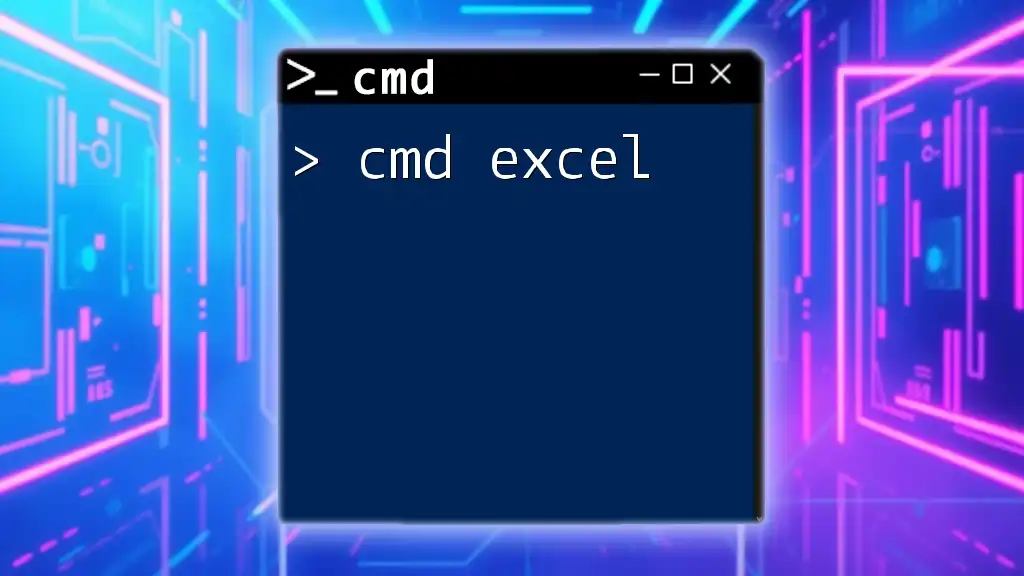
CMD Exec Best Practices
Error Handling in CMD Exec
Effective error handling strategies are crucial for any CMD exec user. By utilizing `IF` statements, one can gracefully handle errors during command executions. For example:
if errorlevel 1 (
echo Command failed!
)
This small piece of script checks if the previous command had an error (non-zero exit) and takes action accordingly, like displaying an error message.
Command Optimization
Writing efficient commands is essential for productivity. Here are a few tips for optimizing your CMD exec usage:
- Minimize redundant commands by leveraging batch files.
- Use built-in commands wisely to avoid unnecessary complexity.
- Organize commands logically in batch scripts to improve readability.
Avoid common pitfalls such as excessive use of echo commands in scripts, as this may clutter the output and confuse users.
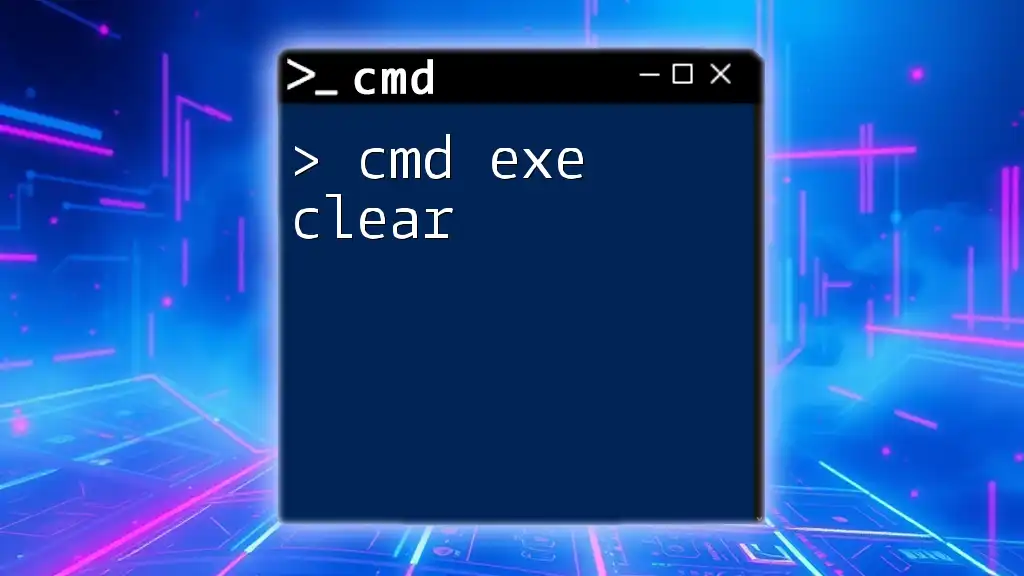
Use Cases of CMD Exec in Real Life
System Administration
CMD exec is an invaluable tool for system administrators. It enables management of processes and services directly. For example, administrators can start or stop services using respective commands:
net start "ServiceName"
net stop "ServiceName"
Such versatility makes CMD exec integral to system maintenance.
Automation and Scripting
Automating repetitive tasks is a hallmark of CMD exec. Users can schedule batch files to run at specific times using Windows Task Scheduler, significantly reducing manual workload.
Troubleshooting and Diagnostics
CMD exec commands provide critical diagnostics for systems. For instance, the PING command helps verify connectivity and diagnose network issues:
ping google.com
Analyzing the results can pinpoint network outages or latency problems, showcasing the diagnostic prowess of CMD exec.
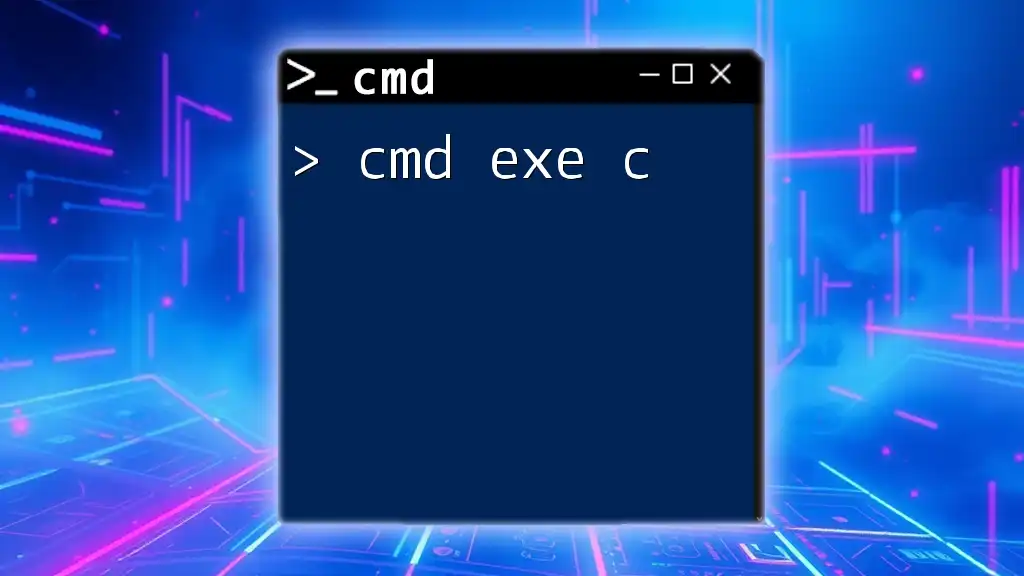
Conclusion
Mastering CMD exec unlocks a powerful suite of tools for interacting with the Windows operating system. By understanding commands, scripts, and best practices, users can greatly enhance their productivity and system management capabilities. Continued exploration and learning in CMD exec are essential for anyone looking to leverage the full potential of their computing environment.
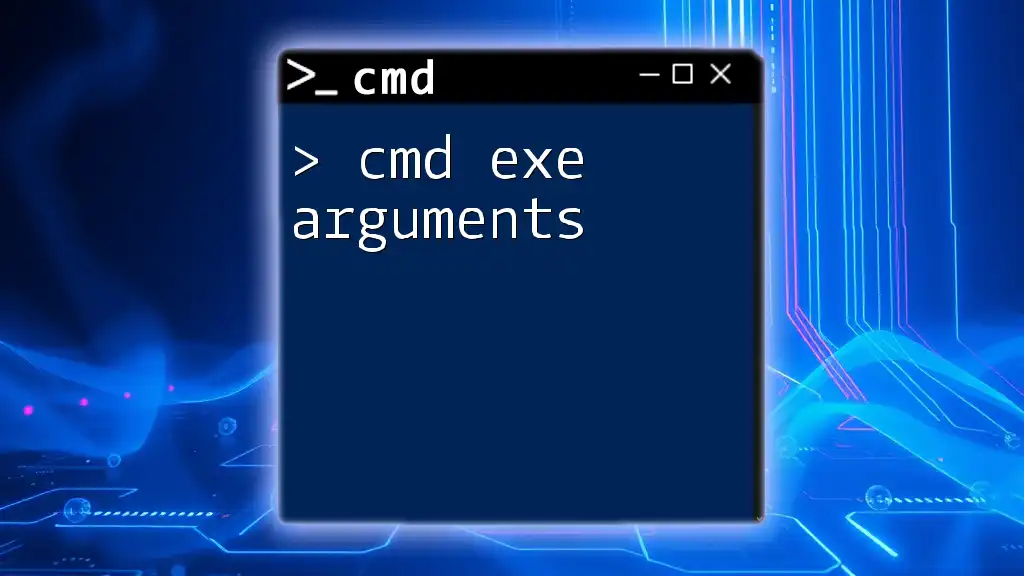
References and Additional Resources
To further enhance your CMD skills, consider exploring various online resources, such as blogs, forums, and communities dedicated to command-line enthusiasts. Engaging with others will deepen your knowledge and provide opportunities to share insights and experiences.

